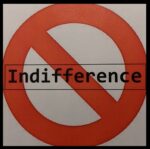The book arrived with Amazon punctuality; I was holding it in my hands, a “New York Times #1 Bestseller”
White Fragility
“Why it’s so hard for white people to talk about racism”
The cover, white print on black background, or maybe it was to be seen as an etching, showing the white below the black overlay. Given the topic of the book I can hardly imagine the cover not being designed to relay some kind of deeper message, what ever that is supposed to be.
Being a slow reader, I developed my own system to determine how much or how little to read of “educational” literature. There is just too much in print to read it all, so If I decide to give a book a try, I will not necessarily read it cover to cover, but as a rule, use the foreword and introduction to determine how much time I will spend on the rest of the pages.
If the title to the book raised my curiosity, then leafing through it proved to be a hair-raising and dreadful experience, beyond belief. Here are some links to articles that address the book better than I ever could.
Speaking Out Against Robin DiAngelo’s Toxic White Fragility – American Thinker
Robin DiAngelo’s Misreading of Michel Foucault – Quillette
The Intellectual Fraud of Robin DiAngelo’s “White Fragility” – New Discourses
I certainly do not deny that racism exists. It may manifest itself more or less aggressively in different parts of the world or social settings, but it is nevertheless real.
However, Robin DiAngelo’s book does nothing to facilitate the open dialog required to overcome any real or perceived racism; to the contrary, her views and writings only fuel the flames of hatred and division on both sides of the discussion.
There is a saying that religious people can be “so heavenly minded, that they are of no worldly good? In Robin DiAngelo’s case one could say that she is “so entangled in the world she created in her mind, that she is of no good for reconciliation in the real world” On second thought, reconciliation is obviously not something she is striving for.
If anything, there is ample material in this book that could label the author the queen of racism. In the process of throwing rocks at what she calls “white people”, Robin DiAngelo demolished the very glass house she built for herself. Being the person that started the myth about white fragility, she must know all about it, but very little about the real fragility of glass houses.
Until next time. Horstt
